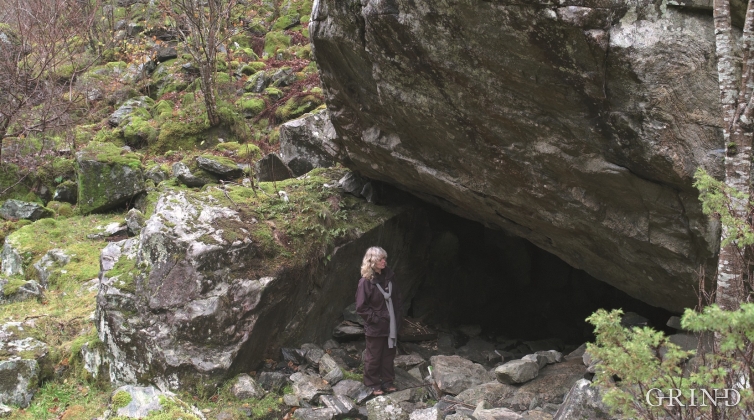Published: 19.02.2013 | Author: Svein Indrelid
Storsetehilleren, or Matrehola (cave) has probably served as a hunting post for a couple of thousand years. (Svein Nord).
On a large gravel terrace in Matredalen (the Matre valley), a couple of kilometres from the coastal settlement Matre, lies Storseterhilleren, at the end of a large stone block that came rushing down from the mountain. The Matre river runs just over 100 metres to the east of the cave.
Archaeological finds tell us that the cave has been in use in early Iron Age, in the late Middle Ages and in recent times. Parts of knives, spinning wheels, ceramics, steatite, scissors and sharpening tools have been unearthed. Bone material shows that salmon, trout, cod, haddock, coalfish and redfish have been on the menu. In addition, bones of sheep, goat, pig, cattle, red dear, seal and mountain fox have also been found. These finds, and the amount of finds, indicate that the cave has only been used sporadically. It is most likely that there has been some kind of hunting post in the cave. This is where people have stayed, made fire and cooked their food.
- Bergsvik, K. A. and Hansen, G., 2015. Medieval Rockshelters in Western Norway - Activities, Functions and Social Identities. Nordic Middle Ages - Artefacts, Landscapes and Society. Essays in Honour of Ingvild Øye on her 70th Birthday. UBAS, University of Bergen Archaeological Series 8. Universitetet i Bergen, 49-76.
- Bjørn, A. (1914-1915) Et nytt hulefund på Vestlandet. I: Bergens Museums aarbog, 12
- Frølich, T. (1916) Storsæte-hilleren i Matredalen. I: Foreningen til norske fortidsminnesmerkers bevaring, Årbok. Oslo, Foreningen, s. 113-115.



